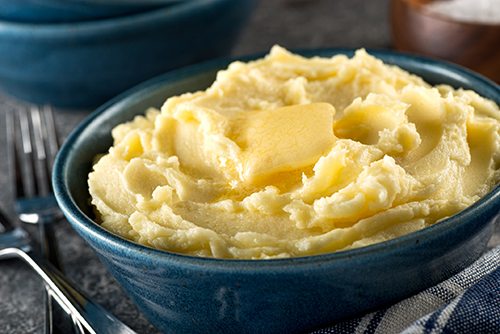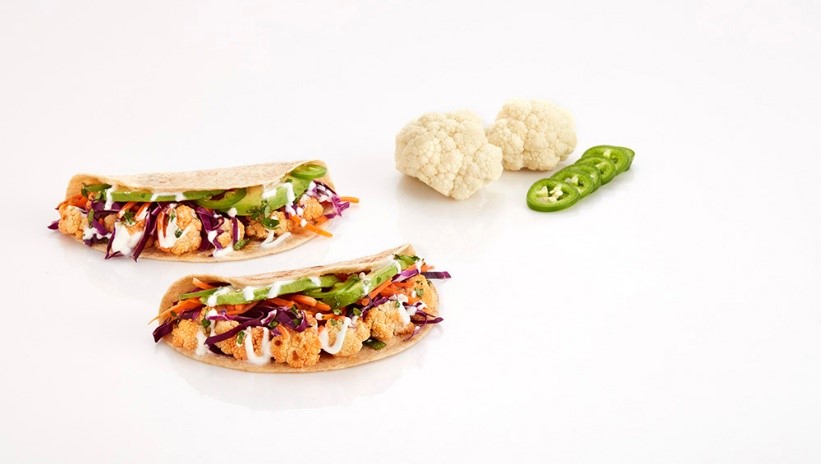Are carbs good or bad?
August 28, 2019
How to make the right choices
Dipti Shah M.S., RDN, LDN, Clinical Dietitian at Northwest Community Hospital

Carbs (short for carbohydrates) have been highly controversial, and many question whether we should welcome them into our diets or avoid them altogether.
What are carbs?
Carbs are one of three macronutrients (the other two are protein and fat) that are essential components of any diet and a source of energy for our bodies. Most foods we eat contain some carbs including fruit, vegetables, grains and dairy products.
Sugars, starches and fiber all fall into the carbs category. Sugar alcohols commonly found in sugar-free foods are a form of carbs but usually do not provide many calories and have a laxative effect in some people.
Carbohydrate food sources include:
Starch
Starchy vegetables include peas, corn, lima beans, potatoes, dried beans, lentils, and grains such as oats, barley and rice.
Fiber
Fruits, vegetables, whole grains, nuts and legumes have fiber. Fiber is absent in animal products such as milk, eggs, meat, poultry and fish.
Sugars
Sugars occur naturally in fruits and milk. “Added sugars” include candy, table sugar, syrups, soft drinks, cookies, cakes, pies, pastries, doughnuts and fruit juices.
There are many different names for sugar. Examples of common names are brown sugar, molasses, honey, beet sugar, cane sugar, confectioner’s sugar, powdered sugar, raw sugar, turbinado, maple syrup, corn syrup, high-fructose corn syrup, agave nectar, sugar cane, anhydrous dextrose, dextrose, invert sugar, malt syrup, nectars (e.g., peach nectar, pear nectar), pancake syrup, raw sugar and sucrose.
How do they differ?
Sugars and starches get broken down to their simplest carb form– glucose – which the body uses for energy. Fiber passes through the body undigested and helps regulate digestion, blood sugar, cholesterol and is good for gut health. Carbs provide beneficial vitamins, minerals and phytonutrients. Excess carbs delivered to the liver and muscle can be stored as glycogen, fueling the body during exercise or when blood glucose levels run low.
Carbs also can be turned into fat which is stored to be used for energy, although, it is not as readily available for energy as glycogen. On a low carb diet, our glycogen stores eventually get depleted, we lose some water in the process which shows up as weight loss, and the liver begins to break down fat for energy. This article may provide some insight into the most followed low carb diet.
Certain diseases such as diabetes warrant limiting carbs, but we should not eliminate them entirely because they have health benefits that ensure we don’t run the risk of hypoglycemia. This is especially important for those patients who are insulin-dependent and take blood glucose-lowering drugs.
Dietary guidelines recommend carbs make up 45 to 65% of the total daily calories. If you are watching your carb intake, check “Total Carbohydrates” on the nutrition label. It includes starches, fiber and naturally occurring, as well as added sugars and sugar alcohols.
Simple or complex?
A carb is classified as simple or complex depending on how it is absorbed in the body.
Simple carbs like fruit, milk and milk products are digested more quickly, producing a spike in blood glucose with a subsequent crash that triggers hunger sooner. Not all simple carbs are unhealthy, but the ones found in processed foods with added sugars are the ones we should try to avoid.
Complex carbs are foods with fiber like greens, grains and vegetables. They take longer to digest, creating a steady rise in blood glucose that provides long-lasting energy. Therefore, complex carbs are the better choice of the two.
How do you incorporate healthy carbs into your diet?
Try the following:
- Include at least 1 cup of non-starchy vegetables (besides corn, peas, potatoes) for lunch and dinner.
- Look for bread that reads 100% whole grain and provides greater than or equal to 3 grams of fiber per slice. Bread with enriched bleached flour as its first ingredient tells you it contains white flour.
- Buy cereals with no added sugars and sweeten your cereals (hot or cold) with fruit instead.
- Beans (all kinds) are a very good source of complex carbs. Add them to your salads, soups and stews. Try bean burgers or snack on a handful of soy nuts or crispy chickpeas.
- Try varieties of grains besides wheat, such as quinoa, millet, triticale and bulgur.
- Snack on whole fruits versus sipping on fruit juices. To get the most fiber, enjoy fruits with the skin on after washing thoroughly.
- Watch what you drink. Liquids can pack a lot of added sugars, especially soda, fruit juices, energy drinks and flavored water.
- Couple carbs with protein foods to avoid the spike in your blood glucose. For healthy combination snack ideas, refer to this article.
Low-carb recipe

Enjoy these veggie tacos with only 40 grams of carbs for two tacos.